Like all colors, blue comes in multiple shades. This list should help you find and identify the perfect shade of blue for any projects, including but not limited to decorations, painting, refurbishing, and everything in between! All of which are distinguishable with their names, history, and unique properties.
The importance of understanding shades of blue cannot be underestimated when starting any project, as they all have vastly different tones which reshape the mood, feel, and complimentary colors. Therefore, we have included Hex, RGB, and CMYK codes for ease of reference and discovery!
A Guide to Shades of Blue with Names, Hex, RGB, and CMYK Codes
Turquoise

Hex: #40E0D0
RGB: 64, 224, 208
CMYK: 71, 0, 7, 12
This shade of blue is named after the gemstone of the same name; turquoise is a light green-blue color with various shades, including but not limited to celeste, turquoise blue, medium turquoise, dark turquoise, and bright turquoise.
Powder Blue

Hex #B0E0E6
RGB 176, 224, 230
CMYK 23, 3, 0, 10
Powder blue is an ashen shade of blue used predominately in the 1650s in industries such as glassware, laundry, and fabric dyeing. Although, older glassware which sported powder blue, was typically darker than its modern iteration.
Sky Blue

Hex #ADD8E6
RGB 173, 216, 230
CMYK 25, 6, 0, 10
Sky blue is named after the color of the sky on a bright sunny day; it is a light blue shade that is typically associated with space. This calming color is featured in the national flags of Argentina, the Bahamas, Botswana, and Fiji.
Electric Blue

Hex #7DF9FF
RGB 125, 249, 255
CMYK 51, 2, 0, 0
Originally named after the colors visible from the ionized airglow caused by electrical discharges, the meaning behind electric blue has changed in the modern-day, instead of being associated with “electric, frantic” energy thanks to its bright, vibrant tone.
Air Force Blue (RAF)

Hex #5D8AA8
RGB 93, 138, 168
CMYK 45, 18, 0, 34
Although Air Force Blue denotes the shades associated with the British Air Force, the US Air Force, and the US Air Force Academy, the original color stems from the British Air Force, which is notable darker and greyer in tone than its US counterparts.
Baby Blue

Hex #BCD4E6
RGB 188, 212, 230
CMYK 18, 8, 0, 10
Slightly lighter than sky blue, this pastel color evokes youth, tranquility, and minimalism.
Tiffany Blue

Hex #81D8D0
RGB 129, 216, 208
CMYK 40, 0, 4, 15
Created by the jewelry company Tiffany & Co, this color rose to prominence in the 1845 issue of Tiffany and Co’s catalog entitled Tiffany’s Blue Book.
Consequently, this color became the 1998 trademark for the company, with its dark, green-blue tint seen on branded jewelry boxes and bags.
Steel Blue

Hex #4682B4
RGB 70, 130, 180
CMYK 61, 28, 0, 29
Named after the process whereby steel takes on a dark blue shade when undergoing the process of “blueing,” wherein the steel is manipulated to protect it from rust, steel blue is a dull bluish-grey color.
Carolina Blue

Hex #4B9CD3
RGB 75, 156, 211
CMYK 64, 26, 0, 17
As the official school color of North Carolina University, this shade of blue has a neutral, subdued grey tint to it.
Consequently, Carolina blue is often used in official clothing, events, and marketing materials for the university.
Turkish Blue

Hex #4F97A3
RGB 79, 151, 163
CMYK 52, 7, 0, 36
Turkish blue has a unique purple-grey tint, making it a bit lighter and more vibrant than navy blue, to which it is often compared (see below for details on navy blue for comparison.)
Maya Blue

Hex #73C2FB
RGB 115, 194, 251
CMYK 54, 23, 0, 2
Maya blue is an ancient shade of blue created by Mesoamerican societies such as the Mayans and Aztecs through the use of organic and inorganic materials.
This vibrant pigment was chosen for its resilience to harsh conditions; while maintaining its vibrant glow and hue.
Teal

Hex #008080
RGB 0, 128, 128
CMYK 100, 0, 0, 50
While at times appearing more green than blue, teal derived its name from the plumage of the common teal bird.
Cornflower Blue

Hex #6495ED
RGB 100, 149, 237
CMYK 58, 37, 0, 7
Cornflower blue is a “truer shade of blue” as it maintains very few green pigments. This hue of blue is favored in sapphires for their bluish-violet tone; cornflower blue was also considered a favorite pigment for Dutch artist Johannes Vermeer.
Sapphire Blue

Hex #0F52BA
RGB 15, 82, 186
CMYK 92, 56, 0, 27
Sapphire blue is named after the gemstone’s color of the same name. Sapphire blue has numerous shades itself, including but not limited to medium sapphire, B’dazzled blue, blue sapphire, and dark sapphire.
Egyptian Blue

Hex #1034A6
RGB 16, 52, 166
CMYK 90, 69, 0, 35
Like Maya Blue, Egyptian Blue was named after the pigmentation of blue found in ancient Egyptian murals and art. It is believed that the ancient Egyptians derived the formula from the ancient Romans.
Interestingly, modern science has found that Egyptian blue has properties of light absorption, which help to cool down roofs and walls, which may explain its use in Egypt’s desert climate!
Yale Blue

Hex #00356B
RGB 0, 53, 107
CMYK 100, 50, 0, 58
Like Carolina blue, Yale blue is named after its association with the university/college of the same name and the prominence of the dark blue shade with official Yale clothing, events, and marketing.

Hex #000080
RGB 0, 0, 128
CMYK 100, 100, 0, 50
Named after the color of the uniforms that adorned the officers of the British Royal Navy in 1748, this dark shade of blue has become synonymous with nautical organizations and activities.
Prussian Blue

Hex #003153
RGB 0, 49, 83
CMYK 100, 41, 0, 67
Prussian blue is made via oxidizing ferrous ferrocyanide salts. Although this color is best associated with the now-defunct Prussian empire, it is curious to note that this insolvable pigment was popular in painting – dating back to using the dye in Japanese woodblock prints!
Space Cadet Blue

Hex #1D2951
RGB 29, 41, 81
CMYK 64, 49, 0, 68
Space cadet blue is a dark shade of blue that would be seen to mirror the colors one would expect to find in the furthest reaches of our atmosphere before entering the void of space.
Space cadet blue was believed to have been invented in Australia and New Zealand in 2007.
Royal Blue

Hex #002366
RGB 0, 35, 102
CMYK 100, 66, 0, 60
Royal blue contains many hues of azure blue, which give it a rich blue color and vibrance, despite its dark shade. Royal blue was believed to have been invented by millers in Rode, Somerset, England, upon their appointment as the royal dressmakers for Queen Charlotte.
Royal blue has two further shades queen blue and imperial blue.
Periwinkle

Hex #CCCCFF
RGB 204, 204, 255
CMYK 20, 20, 0, 0
Named after the periwinkle flower, this shade of blue is a lighter tone that is sometimes referred to as lavender-blue, given the inclusion of purple-pink fragments.
Morning Blue

Hex #8DA399
RGB 141, 163, 153
CMYK 13, 0, 6, 36
Named after the colors one may expect in the very early morning sky, this very dark shade of blue has a black-green tint, giving it an ominous and shadowy presence.
Uranian Blue

Hex #AFDBF5
RGB 175, 219, 245
CMYK 29, 11, 0, 4
Uranian blue is a light blue shade of blue that derives its name from the colors of the planet Uranus.
Fluorescent Blue

Hex #15F4EE
RGB 21, 244, 238
CMYK 91, 0, 2, 4
As the name suggests, fluorescent blue is derived from the sensation and brightness of fluorescent lighting. Furthermore, fluorescent blue is the color of an Indian 50-rupee note.
Ruddy Blue

Hex #76ABDF
RGB 118, 171, 223
CMYK 47, 23, 0, 13
As a lighter shade of azure blue, this shade is named after the unique colors found on the beak of the ruddy duck.
Admiral Blue

Hex #2C3863
RGB 44, 56, 99
CMYK 56, 43, 0, 61
As an extension of Navy blue, admiral blue is named after the color of the uniforms adorned by personnel of the British Royal Navy which has achieved the rank of “Admiral of the Blue.”
Although this rank was abolished in 1864, both the name and shade of blue have persisted.
Aegean Blue

Hex #4E6E81
RGB 78, 110, 129
CMYK 40, 15, 0, 49
Aegean blue is a muted shade of blue with a slight smoky grey-black hint to its color gradient. The name is taken from a stretch of the Mediterranean Ocean prone to murkier waters due to storms and rough seas.
Aero Blue

Hex #C9FFE5
RGB 201, 255, 229
CMYK 21, 0, 10, 0
Considered by some people to be more green than blue, aero blue is a lighter shade of teal, which is often used in marketing environmentally friendly products or policies thanks to its soft greenish-blue hue.
Air Superiority Blue

Hex #72A0C1
RGB 114, 160, 193
CMYK 41, 17, 0, 24
Air superiority blue is one of the official colors of the US Air Force; the blue-grey shade was adopted by the air force in 1956 and is commonly found in airplane designs.
Alice Blue

Hex #F0F8FF
RGB 240, 248, 255
CMYK 6, 3, 0, 0
Alice blue is an extremely light shade of blue that is almost white and is named after the character Alice from Lewis Carrol’s Alice’s Adventures In Wonderland.
Aqua Blue

Hex #0AFFFF
RGB 10, 255, 255
CMYK 96, 0, 0, 0
Aqua blue is a bright shade of blue that is often used when designing or advertising summer events such as beach parties or waterparks. Consequently, aqua blue signifies positive outdoor activities and water sports.
Aquamarine Blue

Hex #6BCAE2
RGB 107, 202, 226
CMYK 53, 11, 0, 11
First recorded in 1598, aquamarine blue is named after the blue-green tint of the gemstone.
Arctic Blue

Hex #C6E6FB
RGB 198, 230, 251
CMYK 21, 8, 0, 2
Arctic Blue is a light, grey-blue named after the Arctic Circle’s icy waters. Consequently, the color has been associated with cool, calming waters and frigid polar ice caps.
Argentina Blue

Hex #6CB4EE
RGB 108, 180, 238
CMYK 55, 24, 0, 7
Not to be confused with sky blue, Argentina blue is a darker shade of blue that is believed to represent the Argentinian Sky on a sunny day or an ode to an Argentinian royal household.

Hex #002D62
RGB 0, 45, 98
CMYK 100, 54, 0, 62
Named after the colors of the Houston Astros baseball team, Astros navy is a dark navy shade of blue, likely used to signify the darker hues of our atmosphere, similar to space cadet blue.
Bayern Blue

Hex #0066B2
RGB 0, 102, 178
CMYK 100, 43, 0, 30
Bayern blue is a distinct shade of blue that straddles the line between dark and light shades. Bayern blue is named after the official colors of the German soccer club, Bayern Munich.
Berry Blue

Hex #4F86F7
RGB 79, 134, 247
CMYK 68, 46, 0, 3
Curiously, berry blue has little association with the colors of actual berries, which tend to sport various colors such as purple, pink, red, and black.
Instead, berry blue is more closely associated with our artificial construction of synthetic berry products such as flavored berry candies or ice slushies!
Blue Yonder

Hex #5072A7
RGB 80, 114, 167
CMYK 52, 32, 0, 35
Blue yonder is believed to depict the sky at twilight, meaning a black-grey shade of blue instead of a lighter vibrant shade such as sky blue.
Bleu De France Blue

Hex #318CE7
RGB 49, 140, 231
CMYK 79, 39, 0, 9
This shade of blue dates back to the 12th century and the French Royal Family; perhaps no other color shade is so closely linked to a people’s national identity than Bleu de France Blue’s association with the French People.
Blue – Grey

Hex #6699CC
RGB 102, 153, 204
CMYK 50, 25, 0, 20
As the most self-explanatory entry on this list, blue-grey is a shade of blue that perfectly straddles the line between blue and grey. Consequently, this shade of blue is a subdued color with muted highlights and dark contrast.

Frequently Asked Questions
Why Is Blue Associated With The Cold?
Blue is associated with the cold due to its presence in the natural world. Such as the color blue being identified in cold water or ice formations.
Blue is further associated with the cold due to our body’s reaction. Such as a tinge of blue around your mouth or fingertips in frigid weather.
Is Blue A Primary Color?
Yes, blue is a primary color, along with red and yellow.
Conclusion
As seen above, blue as a primary color incorporates various colors, tones, and contrasts to create an extensive array of shades for you to explore!
Let me know if you have any questions about the different shades of blue color below. And don’t forget to follow Proactive Creative on Pinterest. I’ll keep you up to date on all the best content and tips for creative professionals.





